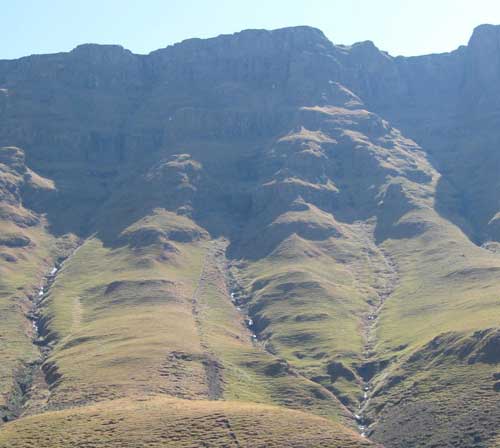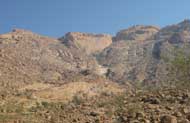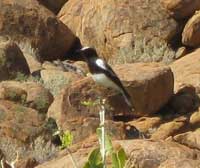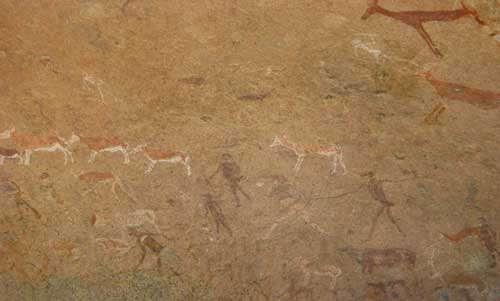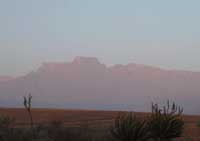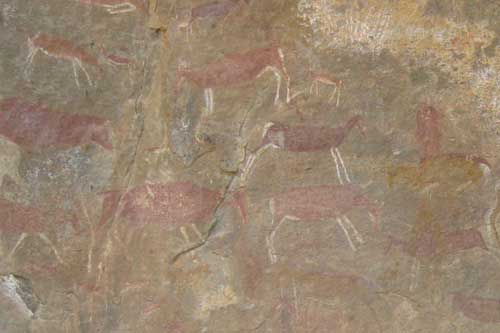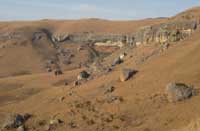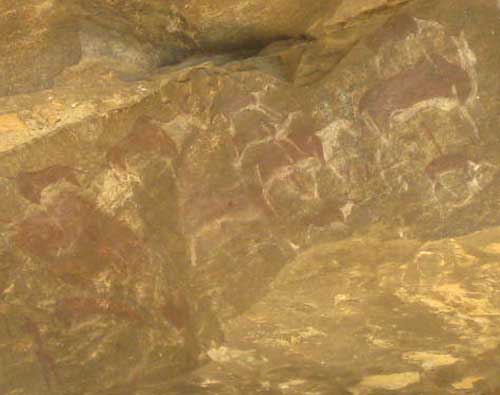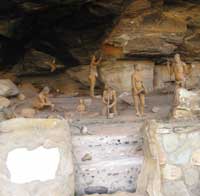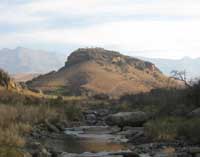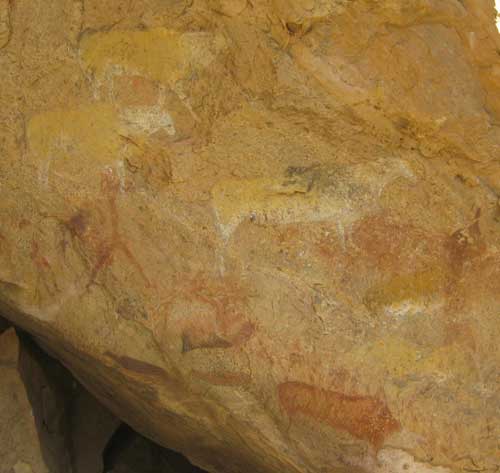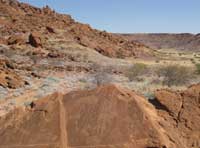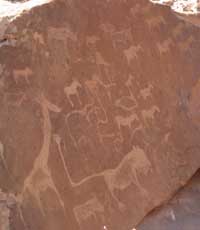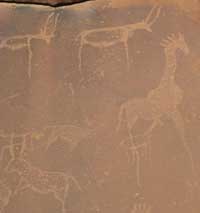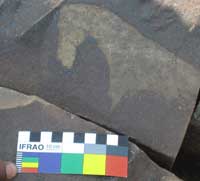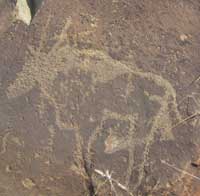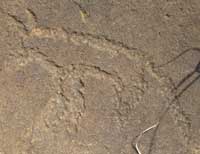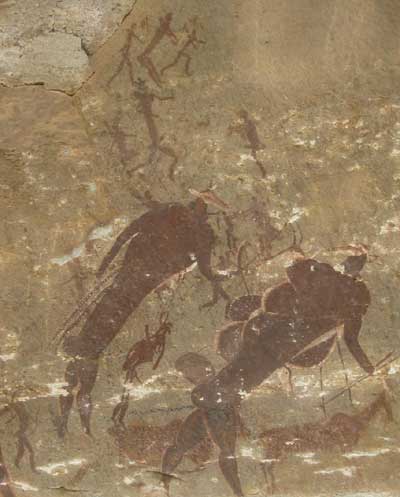 A San rock art panel at Main Cave in the central Drakensberg Mountains, South Africa. |
Rock Artin southern AfricaNotes and photos by Craig RobertsonThe rock art of southern Africa holds a special interest as most of it was done by an ancient people known by various linguistically derived terms such as the San or Khoisan (Khoe-san), !Kung, /Xam; or simply, in English, as the Bushmen. They were the aboriginal peoples of southern Africa and DNA studies have linked them to the earliest modern humans. Their images are looked to for insights into the very origin of art. This is a big subject with a complex history. Even the briefest summary is beyond the scope of this page. For example, one of the most vigorous archaeological debates of recent times has been over the role of shamanistic trance as the motivating activity for art. Its proponents based their case on mainly southern African ethnographic sources, but few now grant it as any more than one activity, and not the dominant one, in causing the production of art (Parkington et al 2008). Rock art in southern Africa, and indeed around the world, is a subject of growing interest. The International Federation of Rock Art Organisations (IFRAO) is the peak body for a large number of national organisations devoted to rock art research, and papers are published regularly in scholarly journals. There are special interest books; conferences and seminars are attracting burgeoning numbers of delegates who regard the subject as a new branch of science. There is a rich heritage of rock art throughout southern Africa. Much of it is either not accessible to the public or may require days of hiking to get to it. What follows here is essentially a tourist sampling of the riches. |
|
Determination of the age of rock art is one of the most difficult and contentious issues in this emerging science. Most of the extant southern African rock art is thought to be of Holocene age, i.e. less than 10,000 ears old, perhaps only a few thousand years old, and much of it no more than several hundred years old. However there is southern African rock art dated to at least 70,000 years old (Thackeray 2005), which may put it close to the time modern humans spread out of Africa depending what theory about that history you accept. Rock art comes in two main forms: engravings called petroglyphs where material is removed from the rock surface by processes such as percussion and abrasion, and paintings where wet material is added to the rock surface by fingers or a type of brush. (There is also mobiliary art - sculpted portable objects.) Both are highly vulnerable to weathering, depending on the techniques used, the rock type, the local climate and other factors. Rock art is often found in caves and on the walls under rock overhangs simply because that is where it is best preserved, not necessarily because they are preferred gallery sites (but there is the 'What to do on a rainy day?' hypothesis). Unfortunately it is not only the weather from which rock art needs to be preserved. The relentless spread of settlement and industrial development are potentially even more destructive.
|
